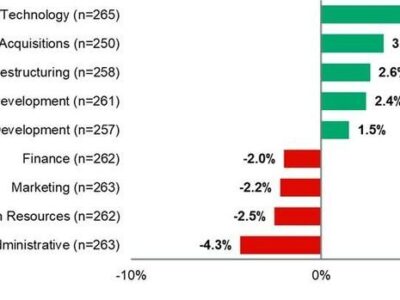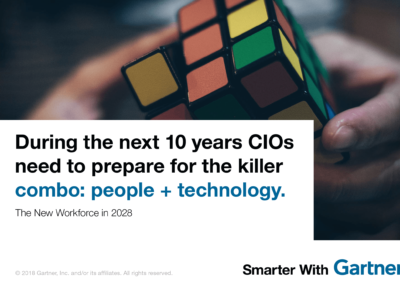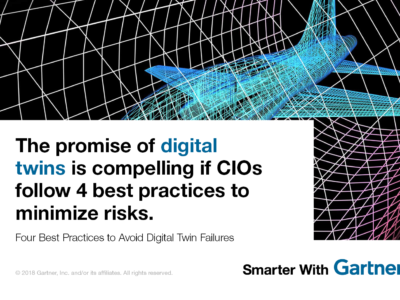CSCOs Should Focus on These Five Practices to Maximize Impact
in 2016, Walmart bought e-commerce startup Jet to help the retail company to compete with online retailer Amazon. The move accentuated a growing aggressiveness for companies to acquiring startups to support existing operations and allow for innovation.
Supply chain organizations now face a rapidly changing business environment that requires traditional and agile approaches to implement initiatives. A bimodal approach combines both methods.
Bimodal consists of two distinct but coherent approaches to creating and delivering business change. Mode 1 is a linear approach, emphasizing predictability, accuracy, reliability and stability. Mode 2 is a nonlinear approach that involves failing fast and learning through iteration. It emphasizes agility and speed, and crucially, the ability to manage uncertainty.
The reality is that company size or age is no longer a practical indicator of overall vendor or product stability.
According to Michael Dominy, research vice president at Gartner, a bimodal approach requires rethinking how information and advanced automation is used.
“Mode 2 initiatives can only flourish if key foundational elements are in place,” Dominy said. “You need to ensure that you have room in the budget for research and development; a mechanism to collect, harvest and govern innovation programs; and, of course, the right talent.”
Deliver on ROI
Chief supply chain officers (CSCOs) should follow these five bimodal practices to help optimize supply chain performance and deliver the best return on investment (ROI):
- Use crowdsourcing to encourage innovation and bimodal thinking
Crowdsourcing exploits the collective intelligence of a diverse group of stakeholders to solve a problem — often with novel results and unanticipated benefits. Targeting the right audience (employees, customers, partners, suppliers or the public) and structuring the crowdsourcing approach (analysis, synthesis and selection) correctly are critical to success. - Adopt differentiated funding for bimodal projects
Using a single, ROI-based approach to get funding approval for all initiatives makes it difficult to scale Mode 2 styles of work. This funding method is often biased toward protection and risk elimination, thus denying innovation — which doesn’t work in a digital world, where new opportunities and threats need to be explored. Instead, consider a portfolio approach. One option is differentiated funding, based on fear-, fact- and faith-based categories of spending. The funding for the portfolio of faith-based initiatives — which focus on unknown but potentially valuable new sources of opportunity — is typically reviewed on an ongoing basis, enabling a regular review of both the solution being tested and the business case behind it. - Work with startups
Partnerships with small companies and startups are a great way to stimulate innovation and fill important technology gaps. However, many larger organizations perceive partnering with large and established vendors as a safer prospect. The reality is that company size or age is no longer a practical indicator of overall vendor or product stability. Mergers and acquisitions (M&As), infusions of capital, new business models and strategic partnerships have elevated many small vendors into international markets while newer markets such as the Internet of Things (IoT) are rapidly diversifying, making it possible for anyone to create products that establish new niches and address consumer or business needs. - Use differentiated metrics to measure value
Not all value can be measured in the same terms, and the introduction of a digital strategy substantially increases the number of faith-oriented initiatives. The business and supply chain must therefore consider measuring value and performance in terms that reflect how the enterprise’s performance is affected by a specific project, solution or service. Investments, projects and even ongoing services have different profiles and must be measured in different ways. - Formalize innovation management
Innovation management initiatives focus on disruptive or step changes that significantly transform the business. Digital business trends are accelerating the need for organizations to create sustainable and productive innovation practices. Sustainable and repeatable innovation requires a systematic management approach that focuses the supply chain culture on the support and cultivation of a community of innovators who are engaged, collaborative and creative. The most successful innovators define and follow a process that ensures that critical activities and best practices are addressed.
Get Smarter
Client Research
Gartner clients can read more in the full report, “Five Bimodal Practices With the Biggest Potential Impact for Supply Chain and Operations.”
Gartner Event
Gartner analysts will provide additional analysis and information on supply chain trends at the Gartner Supply Chain Executive Conferences taking place May 23-25 in Phoenix, AZ and September 20-21 in London. Follow can follow news and updates from the events on Twitter using #GartnerSCC.










